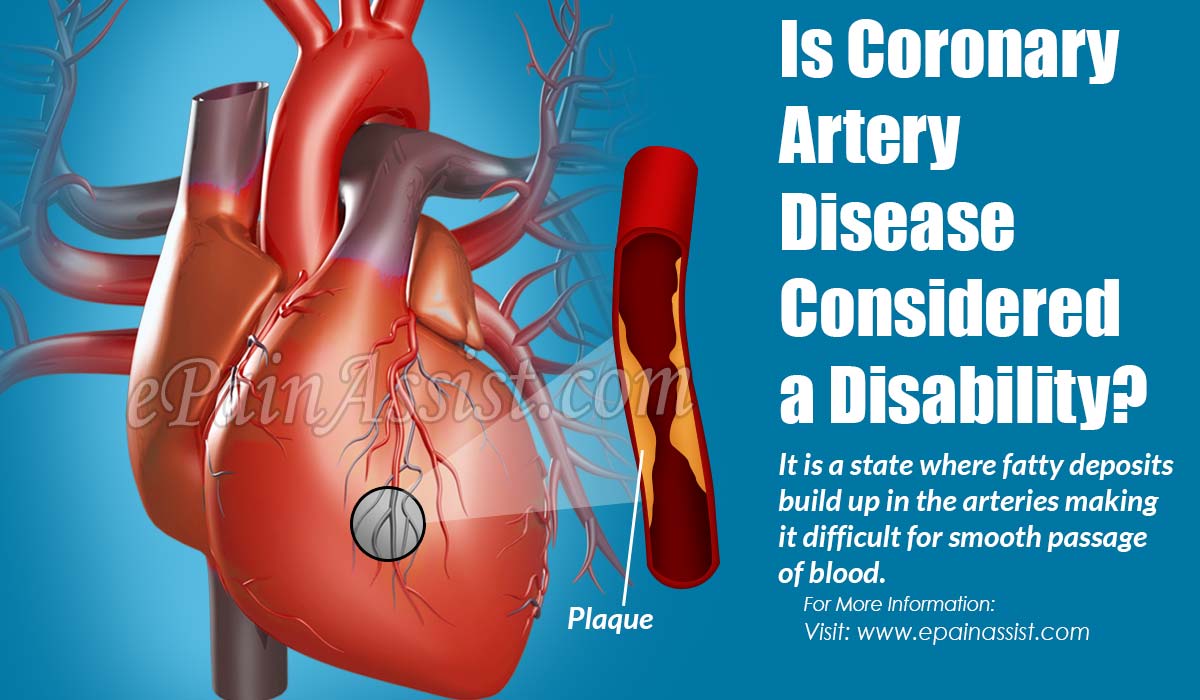Coronary artery disease or ischemic heart disease is a state where fatty deposits build up in the arteries making it difficult for smooth passage of blood. Due to the deposits, the arteries become hard, and therefore reduce the supply of oxygen and blood to human heart muscles. The typical symptoms include chest pain, breath shortness, dizziness and loss of consciousness. It is further logical for the patient to experience a heart attack.

Is Coronary Artery Disease Considered a Disability?
Considering the symptoms and their severity, few patients may or may not return to job, and may or may not be eligible for the social security disability program. It is better to consult a disability attorney and discuss your health situation to increase the chances of success in getting a disability for coronary artery disease.
How to Qualify for the Benefits Provided by the Social Security Disability Program?
It is feasible for an individual to qualify for the disability program offered by the Social Security Administration by meeting the requirements. The requirement includes a demonstration by the patient that the heart condition is weak with reduced functionality that makes it impossible to find a suitable job.
Meeting the Official Listing
The Social Security Administration evaluates the application depending on the symptoms and documents submitted. In very few cases, if a patient does not possess the necessary documentation related to the disease, the administration orders the consultative examination, which helps in evaluating the impairment. In addition to it, if an individual fails to display that he or she is following the treatment, then it will be challenging to meet the 4.0.4 listing of the Blue Book of the SSA.
Required Symptoms
According to the listing 4.0.4 of the Blue Book prepared by the SSA or Social Security Administration, the individual or the patient should display one or more of the following symptoms:
- Angina pectoris
- Atypical angina
- Angina equivalent
- Variant angina
- Silent ischemia
Apart from the symptoms listed by the Blue Book, it is also essential that the patient submits results of ischemic episodes, and abnormal stress test.
AST or Abnormal Stress Test
An abnormal stress exam is an exercise tolerance exam that helps in understanding the functionality of the heart. The test puts a workload equal to 5 METS, which results in any one of the following unusual events:
- Downsloping or Horizontal ST segment depression
- At least 1 mm of ST segment elevation
- A decrease in systolic pressure by 10 mmHg
- Ischemia noted at 5 METS using acceptable imaging such as stress echocardiography
If the victim suffers from two or more ischemic episodes within one year and requires bypass surgery or angioplasty, the patient can apply for Social Security benefit provided by the SSA.
Unusual Imaging Results
If it is risky for the patient to participate in exercise tolerance exam, SSA accepts angiography or acceptable imaging that demonstrates the presence of coronary artery illness. The evidence should display at least 60% narrowness of the arteries without surgery. For a detailed description of the listing, individuals can go through the blue book of the Social Security Administration. Along with the presence of narrowness, it is essential that the disease limits the engagement of the patient in daily routines.
Reduced Functionality Due to CHD or Coronary Heart Disease
If an individual does not meet the requirement of the CHD or coronary heart disease as described above, it is still possible for him or her to apply for the disability benefit. As the next step in the procedure, it is essential that the administration considers whether the illness reduced the capacity to find an employment and work. If the administration believes that the impairment is making it hard for the patient to perform past work to the full potential, it will place the individual under the disabled category.
Also Read:
